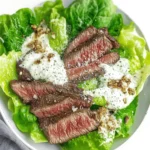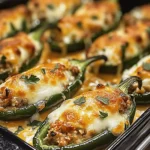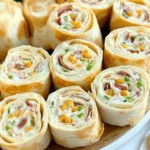These diner-style burgers are the epitome of classic comfort food. Tender, juicy beef patties, perfectly melted cheese, fresh veggies, and all the toppings you love—what’s not to love?
Whether you’re grilling for a weekend BBQ or just need a quick dinner, these burgers are a hit every time. Customizable to your taste, they’re easy to make and even easier to enjoy. Whether you go classic with ketchup and mustard or add a twist with your favorite toppings, these burgers will always be a crowd-pleaser.
Full Recipe:
-
1 1/2 pounds ground beef (preferably 80% lean)
-
Salt and pepper
-
4 hamburger buns
-
1 tablespoon vegetable oil
-
4 slices cheddar cheese
-
1 medium onion, sliced into rings
-
1 large tomato, sliced
-
Lettuce leaves
-
Ketchup and mustard (optional)
-
Pickles (optional)
Directions:
-
Preheat the grill or a large cast-iron skillet over medium-high heat.
-
Form the ground beef into 4 equal patties, about 1/2-inch thick. Season both sides generously with salt and pepper.
-
If using a skillet, add the vegetable oil to the pan. If using a grill, you can skip this step.
-
Cook the patties for 3-4 minutes per side for medium-rare or 5-6 minutes per side for well-done.
-
In the last minute of cooking, place a slice of cheddar cheese on top of each patty to melt.
-
While the burgers cook, toast the buns lightly in the skillet or on the grill.
-
Once cooked, place each patty on the bottom half of a bun. Top with onion rings, tomato slices, lettuce, and pickles. Add ketchup and mustard if desired.
-
Close the burgers with the top half of the buns and serve immediately.
Prep Time: 10 minutes | Cooking Time: 10 minutes | Total Time: 20 minutes
Kcal: 380 kcal | Servings: 4 servings
History and Origin
The diner burger is a quintessential American dish, with roots deeply embedded in the early 20th century. Its exact origin is often debated, but it is widely believed that the hamburger, as we know it today, evolved in the United States in the late 1800s. While many cities claim to have invented the hamburger, it gained widespread popularity after the opening of diners and fast-food joints during the post-World War II era. Diner culture flourished in the mid-20th century, with these establishments becoming hubs for casual meals and community gatherings. The burger became a staple, cooked on a griddle or grill and served with a variety of toppings, from pickles and onions to lettuce and tomatoes.
The diner burger’s cultural significance is tied to the American ideal of fast, affordable comfort food. In many ways, diners and their burgers symbolize the spirit of post-war America—quick, satisfying, and accessible to everyone. These burgers became symbols of casual dining, and their popularity continues to thrive today, whether in classic diners or modern eateries with a nostalgic twist.
Variations and Adaptations
While the basic concept of a diner burger remains largely the same—ground beef, cheese, and a bun—there are numerous regional variations and creative adaptations that have popped up over the years. In the South, for example, you might find diner burgers topped with fried green tomatoes or served with a side of tangy barbecue sauce. On the West Coast, burgers often feature fresh avocado slices and a sunny-side-up egg for added richness.
Another popular variation comes in the form of “double” or “triple” burgers, where multiple beef patties are stacked high and served with extra cheese and condiments. Some diners even offer specialty burgers featuring unique toppings like sautéed mushrooms, caramelized onions, or spicy jalapeños for those who crave a bit more heat.
In recent years, the rise of plant-based diets has influenced the diner burger scene, with many eateries now offering vegetarian or vegan alternatives. These burgers use plant-based patties made from ingredients like black beans, quinoa, or soy protein, allowing those with dietary restrictions or preferences to enjoy the classic diner burger experience.
Internationally, variations of the American diner burger have been adapted to suit different cultural tastes. For instance, in Japan, you might find a burger served with teriyaki sauce and pickled vegetables, while in Germany, a hearty bratwurst might replace the beef patty altogether.
Nutritional Information
A classic diner burger is a flavorful indulgence, but it’s also important to consider the nutritional value of such a beloved dish. On average, a diner burger made with a 4-ounce beef patty, a slice of cheddar cheese, and a standard burger bun contains approximately:
-
Calories: 380 kcal
-
Protein: 28g
-
Fat: 25g
-
Carbohydrates: 25g
-
Fiber: 2g
-
Sodium: 900mg
While the diner burger is undeniably delicious, it’s also important to acknowledge its high-fat content, particularly if topped with additional cheese, bacon, or special sauces. If you’re aiming for a lighter version, consider swapping the beef patty for a leaner option like turkey or plant-based protein. You can also choose a whole-grain bun for an extra boost of fiber or load up on vegetables like lettuce, tomatoes, and onions to enhance the burger’s nutritional profile.
When enjoyed in moderation, the diner burger can certainly be part of a balanced diet. If you’re looking to cut back on the calories, consider swapping high-calorie toppings for healthier alternatives, such as a dollop of Greek yogurt instead of mayo or avocado slices instead of cheese.
Serving Suggestions and Pairings
A diner burger is incredibly versatile when it comes to pairing, whether you’re keeping things traditional or experimenting with new flavors. For a classic meal, serve your burger with a side of crispy French fries and a tall glass of soda or milkshake. You could also opt for a refreshing salad with a light vinaigrette to balance out the richness of the burger.
For a more indulgent experience, serve the burger with crispy onion rings or even a side of coleslaw for a touch of tang and crunch. If you’re feeling adventurous, you can also try pairing the burger with a side of baked sweet potato fries for a twist on the traditional pairing.
Drink-wise, a diner burger pairs well with classic American beverages like root beer, cola, or an ice-cold beer. If you’re looking for something a bit different, try a citrusy IPA or a light lager to complement the savory flavors of the beef patty. Alternatively, for a more refined pairing, you can go for a red wine such as a zinfandel or a malbec, both of which have the body and flavor to stand up to the richness of the burger.
Tips and Tricks for Success
To ensure your diner burger turns out perfectly every time, consider these expert tips and tricks:
-
Use the Right Beef: For the juiciest and most flavorful burger, opt for ground beef with a fat content of around 80%. This will ensure that your burger is tender and flavorful, rather than dry and tough.
-
Don’t Overwork the Meat: When forming your burger patties, handle the meat gently. Overworking it can result in dense, tough burgers. Form the patties gently and make an indentation in the center of each one to help them cook evenly.
-
Get Your Grill or Skillet Hot: Whether you’re grilling or pan-frying your burgers, make sure your cooking surface is preheated. This helps to create a deliciously crisp crust on the outside while keeping the inside juicy and tender.
-
Toast the Buns: Don’t forget to toast your burger buns. A lightly toasted bun adds extra texture and prevents it from becoming soggy when stacked with condiments and juicy beef.
-
Let the Burgers Rest: After cooking, let your burgers rest for a few minutes before serving. This allows the juices to redistribute throughout the patty, resulting in a more flavorful and tender burger.
Potential Health Benefits
While diner burgers are generally not considered a health food, they do contain ingredients that offer certain nutritional benefits. For example, beef is a great source of high-quality protein, which is essential for building and repairing muscle tissue. It’s also rich in essential vitamins and minerals, including iron, zinc, and vitamin B12, all of which are important for energy production and immune function.
For those looking to add more nutrients to their burger, consider using whole-grain buns for added fiber or topping your burger with fresh vegetables, which are packed with vitamins, antioxidants, and fiber. Avocado is another great topping that provides healthy fats, fiber, and potassium, supporting heart health and overall well-being.
Conclusion
The diner burger is more than just a meal—it’s a nostalgic experience that brings together the best of American comfort food. Whether you stick to the classic version with cheese and pickles or customize it with your favorite toppings, this burger will always hit the spot. With its juicy beef patty, perfectly melted cheese, and endless topping possibilities, it’s easy to see why the diner burger remains a beloved staple in American cuisine. So fire up the grill, grab your ingredients, and make this timeless dish at home—your taste buds will thank you!





